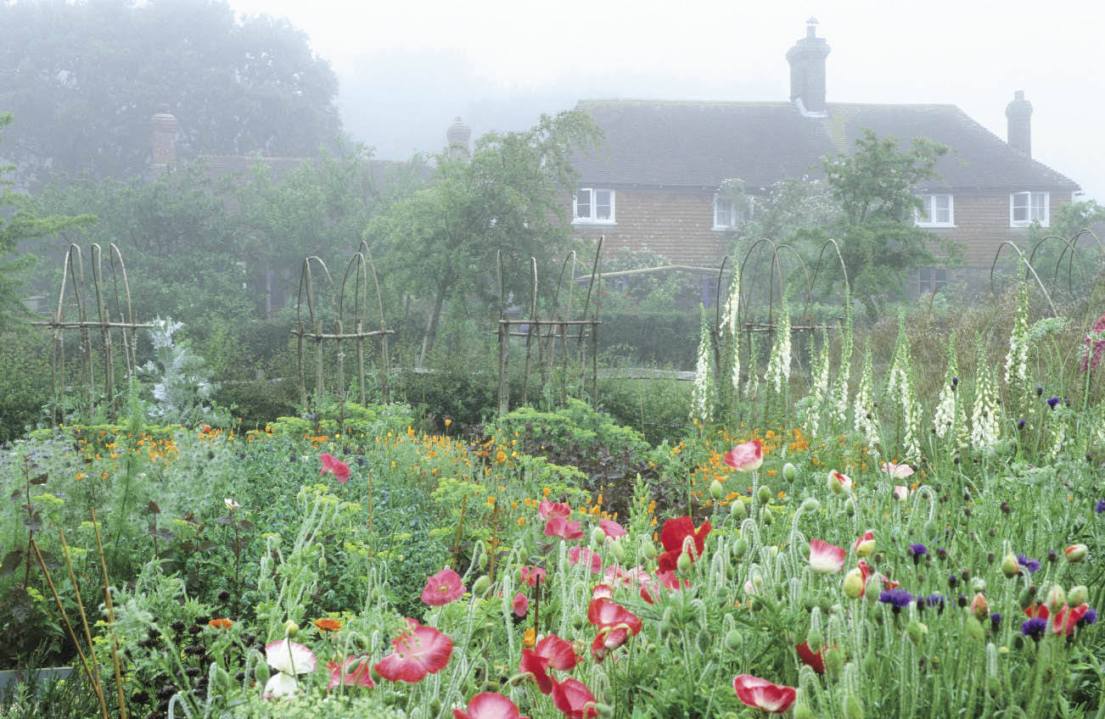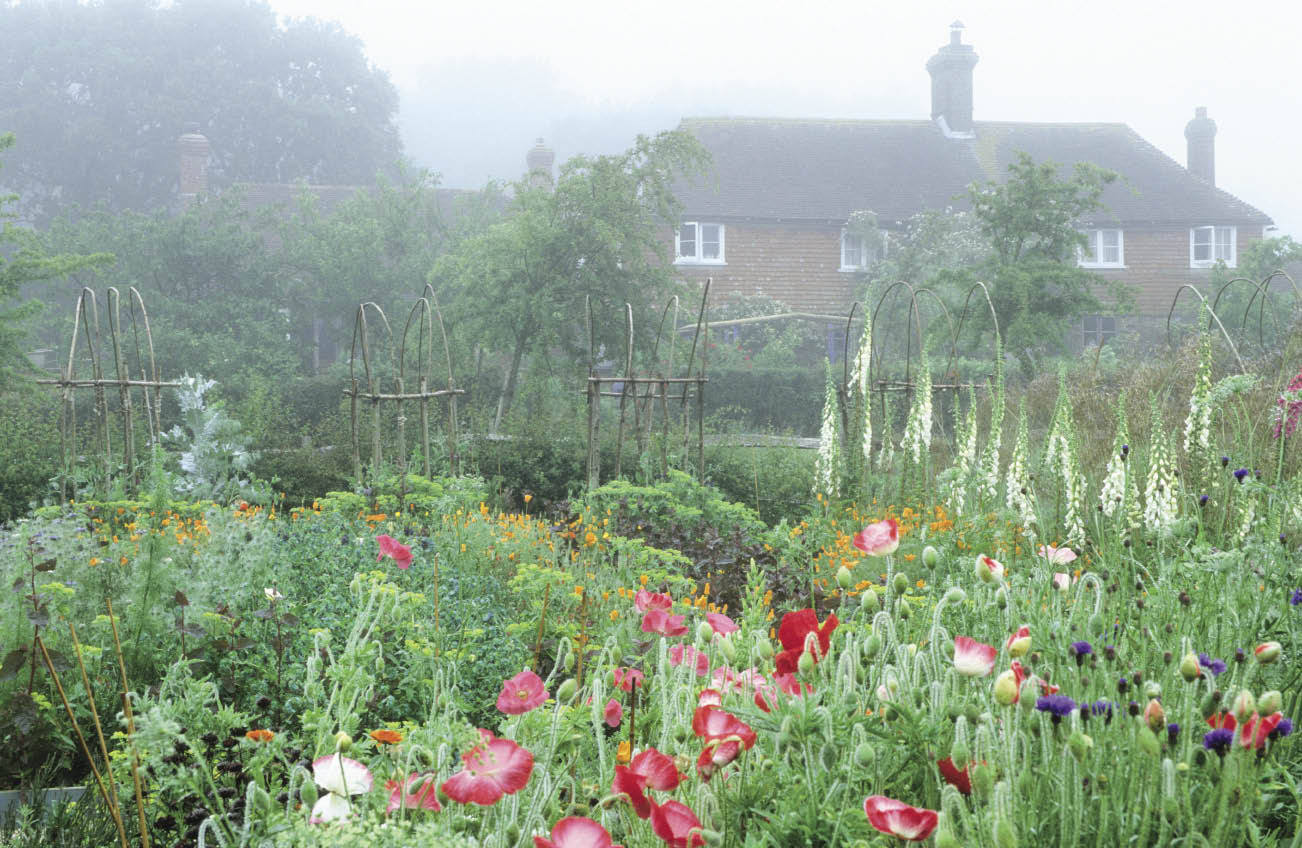In 1999, Adam Nicolson published a very good book called Perch Hill: A New Life, about his escape from London and a break-down, after his divorce and a nasty mugging, to a farm in the Sussex Weald, close to Kipling’s house, Batemans.
In 1999, Adam Nicolson published a very good book called Perch Hill: A New Life, about his escape from London and a break-down, after his divorce and a nasty mugging, to a farm in the Sussex Weald, close to Kipling’s house, Batemans.
It’s one of the great descriptions of what embedding yourself deep in a patch of the countryside is like, truthful about both its solaces and its frustrations. ‘The Weald has found its Thoreau,’ said Richard Mabey. ‘This is Sussex’s answer to Peter Mayle’s A Year in Provence,’ said Alain de Botton. Each according to his own.
As a young man, Nicolson had owned some small, uninhabited islands in the Hebrides given to him by his father Nigel, and he so loved being there, in a wholly natural world, that he has felt ever since ‘essentially shaped by those island times’. They have been his yardstick and touchstone. ‘Is this life, I always ask, as good as that? Does this place measure up to that?’
Having searched England for ‘a place which in its own terms could be an island, an Arcadian simplicity in which crisis and breakdown did not and could not occur’, Nicolson, then in his late thirties, with his second wife Sarah Raven, found Perch Hill Farm and bought it in 1994 for £432,000, won over not by the buildings, ‘a horrible mixture of the improved and the wrecked’, but by its lovely fields, woods and streams, preserved from agricultural destruction by poverty. So for the then price of a handsome London house, he acquired ‘a cramped, dark old farmhouse, a collection of decrepit outbuildings and some fields that would never in a thousand years produce any income worth having. Was this wise? Yes.’
Nicolson’s story, not so different after all from such books as Chris Stewart’s Driving Over Lemons, combined practicalities — buying sheep and chickens, building a new oasthouse in green oak, coming to terms with troublesome neighbours — with lyrical testimony to his ever-deepening attachment to the place. He writes with wonderful fluency about landscape and the seasons, plants as well as people.
Finding a dropped oak branch in mid-summer, for example, makes him see the trees in a new light, ‘their scarred bodies, their withered limbs, the usual asymmetry to their outlines, the slightly uneven track taken by each branch as it moves out from the main stem’, and thus understand ‘each oak not as a thing whole and neatly inevitable in itself, but as the record of its own history of survival and failure, retraction and extension, stress and abundance.’ Look!
By the time he wrote Perch Hill, he had, for several years, been happily pouring the money he made or inherited into the farm. ‘Money, it now seems to me, is our natural environment, as sustaining and happy for us as the sea for a dolphin or the breeze for a bird,’ he observed, leading into an extended passage comparing himself with his Visa card to a swallow in flight, which few pioneer homesteaders could rival.
In conclusion, he described how Perch Hill had entered permanently into his ‘sensuous memory’ and he located its poetic core in
a damp and rushy place hidden, almost surrounded by wood, down in the Slip Field, at the rough bottom end of the farm … I’d do almost anything to defend that field and I know if, for whatever reason, we had to leave this farm, that is the place I would remember.
The Smell of Summer Grass is much more straightforwardly a reprint of Perch Hill than the acknowledgements make clear, a little naughtily. It’s a great treat if you have not read its predecessor, a bit of a swiz if you have. Little has been cut (although the credit-card swallow has gone), some passages have been revised, others inserted (a struggle with ragwort), and the story has been briskly carried on another 12 years in a couple of extra chapters.
The two versions make an interesting comparison. Looking back on the apparent financial irresponsibility of buying Perch Hill, he now adds: ‘I am as happy that Sarah and I married ourselves to Perch Hill as I am about the existence and beauty of my own children.’
For he had been wrong to think Perch Hill a place that would never produce an income, of course. In the original book, he only briefly described Sarah Raven’s creation of her cutting garden and the arrival of its first paying visitors (whom he cheerily dubbed ‘cheques on wheels’ in a newspaper column). This business has become extremely successful and now he embraces it, celebrating ‘the huge grasses and pompom alliums, the acanthus and tiger-lilies, the sugar-pink dahlias and rusty rudbeckias’. Even the polytunnels are pronounced good:
It was our route to fertility. It was doing what this place and places like this are meant to do: growing, growing, growing. We should abandon the exterior view, consider places wonderful if wonderful things are happening in them, not if they conform to a surface vision of rural coherence,
he says, almost as if trying to persuade himself.
Against all expectation, he reports that he left Perch Hill to return to Sissinghurst, after his father’s death in 2004. He explains this by saying first that the making of Perch Hill, just 15 miles from Sissinghurst, had always been ‘driven in me by a need to remake the place where I had lived when I was a child’.
Then, contrariwise, he says that Perch Hill had been not a mere repeat of Sissinghurst, but an improvement, not in status or importance but in rootedness, in being heartfelt — and so he resolved to go back to Sissinghurst to Perch Hill it, ‘to persuade the National Trust to re-establish some of those qualities of authenticity and rooted vitality which had withered in the place since I had known it as a boy’, a mission recorded in another book, as well as a wacky TV series starring Adam and Madam both.
Mission accomplished, or at least begun, he is now once again, he says, turning back to Perch Hill, dreaming of a new cowshed indeed, oak-framed … There may be a third edition yet.
‘To be rooted is perhaps the most important and least recognised need of the human soul. It is one of the hardest to define’, wrote Simone Weil. This book knows that need, attempts that definition.







Comments